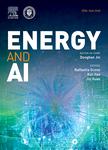Synthetic demand data generation for individual electricity consumers :Generative Adversarial Networks (GANs)
作者机构:TU KaiserslauternKaiserslauternGermany Kahramanmaras Sutcu Imam UniversityKahramanmarasTurkey Fraunhofer ITWMKaiserslauternGermany
出 版 物:《能源与人工智能(英文)》 (Energy and AI)
年 卷 期:2022年第9卷第3期
页 面:37-50页
核心收录:
学科分类:0809[工学-电子科学与技术(可授工学、理学学位)] 08[工学]
基 金:Bundesministerium für Bildung und Forschung, BMBF, (05M20UKA) Bundesministerium für Bildung und Forschung, BMBF
主 题:Electricity consumption Generative adversarial networks Synthetic data generation Unsupervised learning RCGAN TimeGAN CWGAN RCWGAN
摘 要:Load modeling is one of the crucial tasks for improving smart grids’ energy efficiency. Among manyalternatives, machine learning-based load models have become popular in applications and have shownoutstanding performance in recent years. The performance of these models highly relies on data quality andquantity available for training. However, gathering a sufficient amount of high-quality data is time-consumingand extremely expensive. In the last decade, Generative Adversarial Networks (GANs) have demonstrated theirpotential to solve the data shortage problem by generating synthetic data by learning from recorded/empiricaldata. Educated synthetic datasets can reduce prediction error of electricity consumption when combined withempirical data. Further, they can be used to enhance risk management calculations. Therefore, we proposeRCGAN, TimeGAN, CWGAN, and RCWGAN which take individual electricity consumption data as input toprovide synthetic data in this study. Our work focuses on one dimensional times series, and numericalexperiments on an empirical dataset show that GANs are indeed able to generate synthetic data with realisticappearance.



